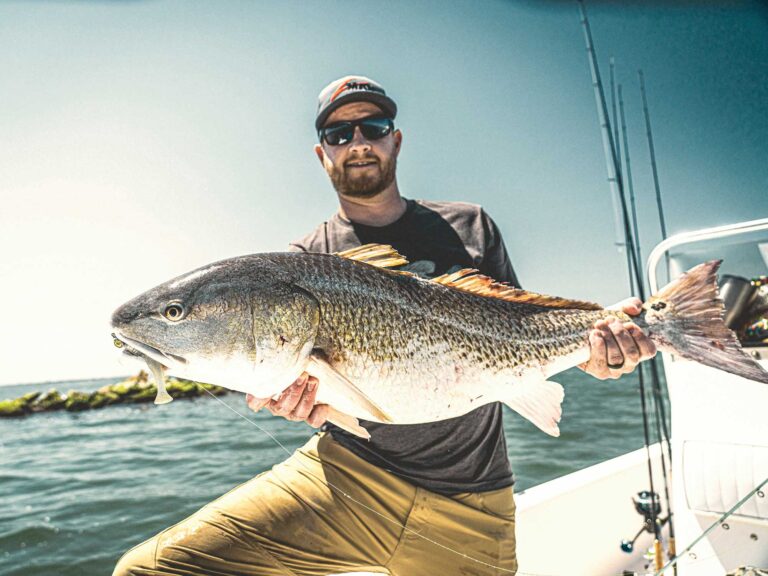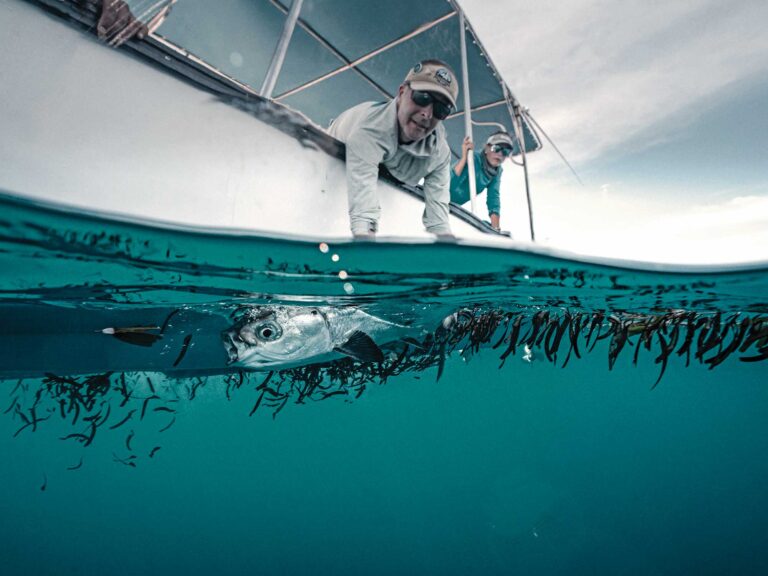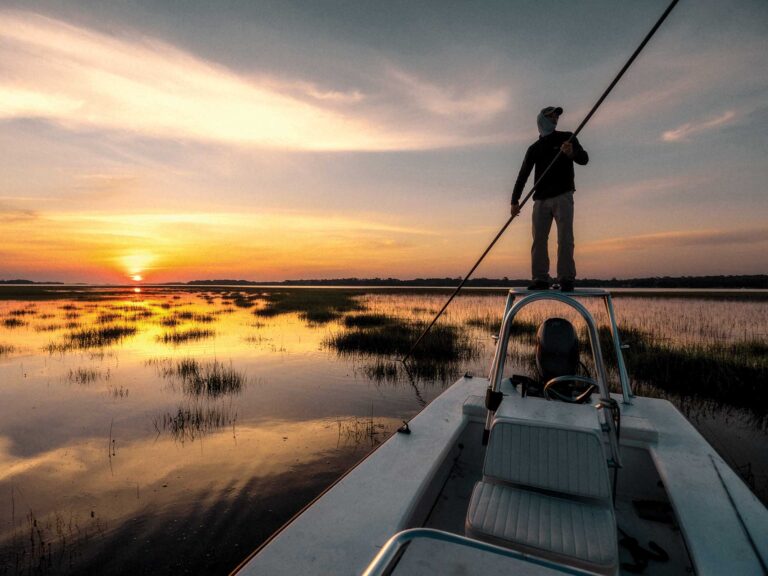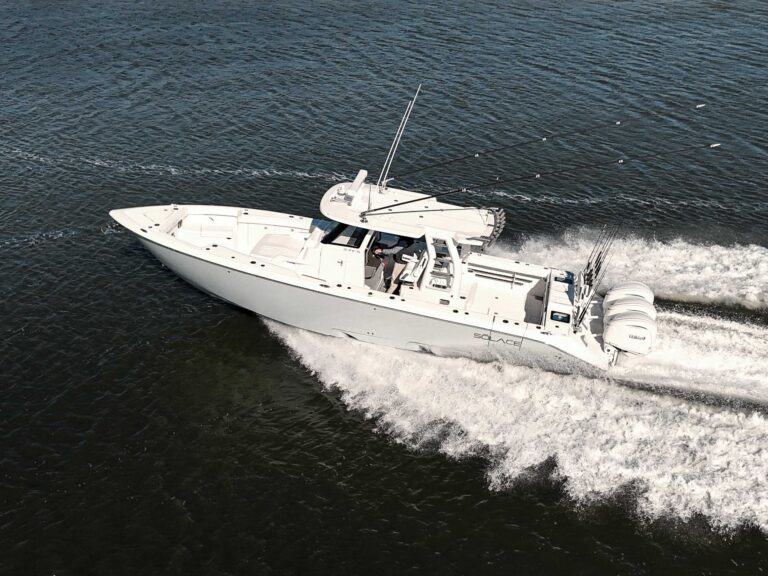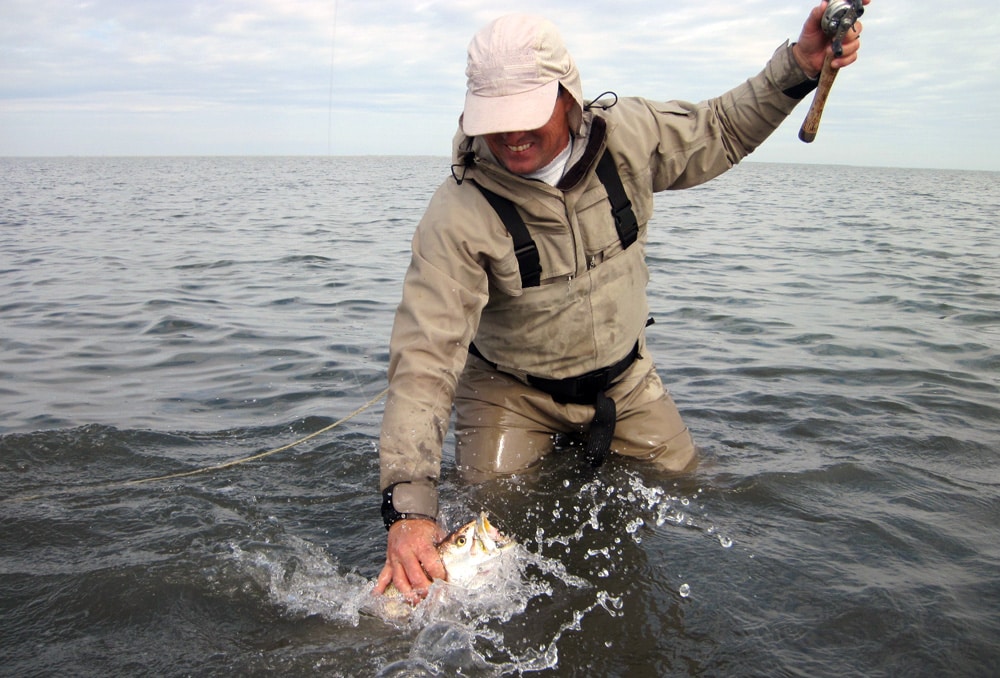
To wade or not to wade? There are plenty of reasons to remain onboard and fish from the comfort of your boat. However, they’re just as many to slide into a pair of waders and slip silently into fish’s comfort zone. Consider when deciding whether to wade or not to wade:
1. Water Depth. Simply put, if fish are holding in water deeper than the top of your waders—stay in the boat. However, if you locate shallow water that’s holding fish that precludes reaching them via boat, wading is a great option.
2. Structure. On occasion, thick or matt grass or other structure (i.e., docks, sea walls, jetties, knolls, sandbars) keeps boats at bay. When these structures preclude access by boat, and the water depth is right, by all means wade in.
3. Local Pressure. On occasion, wadeable waters are pounded with boat traffic and folks slogging baits from their casting decks. If feeding opportunities are there and the water conditions suitable to the fish—they tend to stay put tolerating the traffic. However, they do get boat shy.
If this is the case, by all means wade in. Slipping through the shallows where boats are common lulls the locals into biting, as your approach is stealth and your baits a surprise.
Safety First
Vest. It may sound silly to some, but if you are wearing waders consider that it might be a good idea to wear a flotation device. If you step off in a hole and fill your waders with water, you’ll appreciate the support. Modern PFDs are uber compact. Once you’ve donned one you’ll never know it’s on and they can be had nowadays for under $80: cheap when considering they can save your life.
Wading Belt
A wading belt also is a must. Wrapping one tightly around your waist minimizes the amount of water that can enter your waders should you immerse.
Stringer
If you plan on keeping fish, carry along a floating stringer. The float keeps fish free from underwater nasties and you from getting tangled up. Word to the wise, tie it gently to your waders, in a location you can easily and quickly untie it. More than one fisherman has come nose- to-snout with a toothy critter bent on making their catch lunch.





